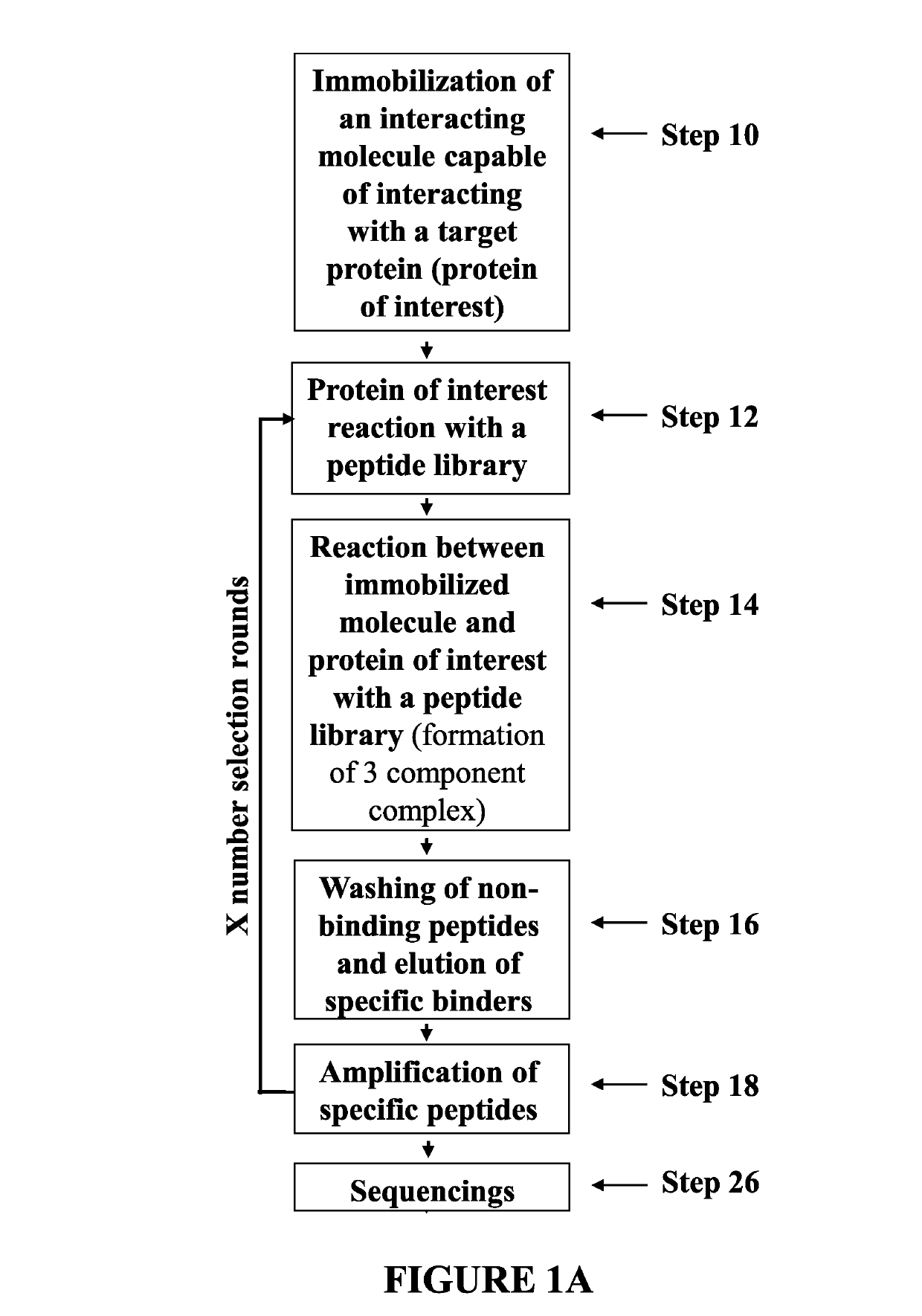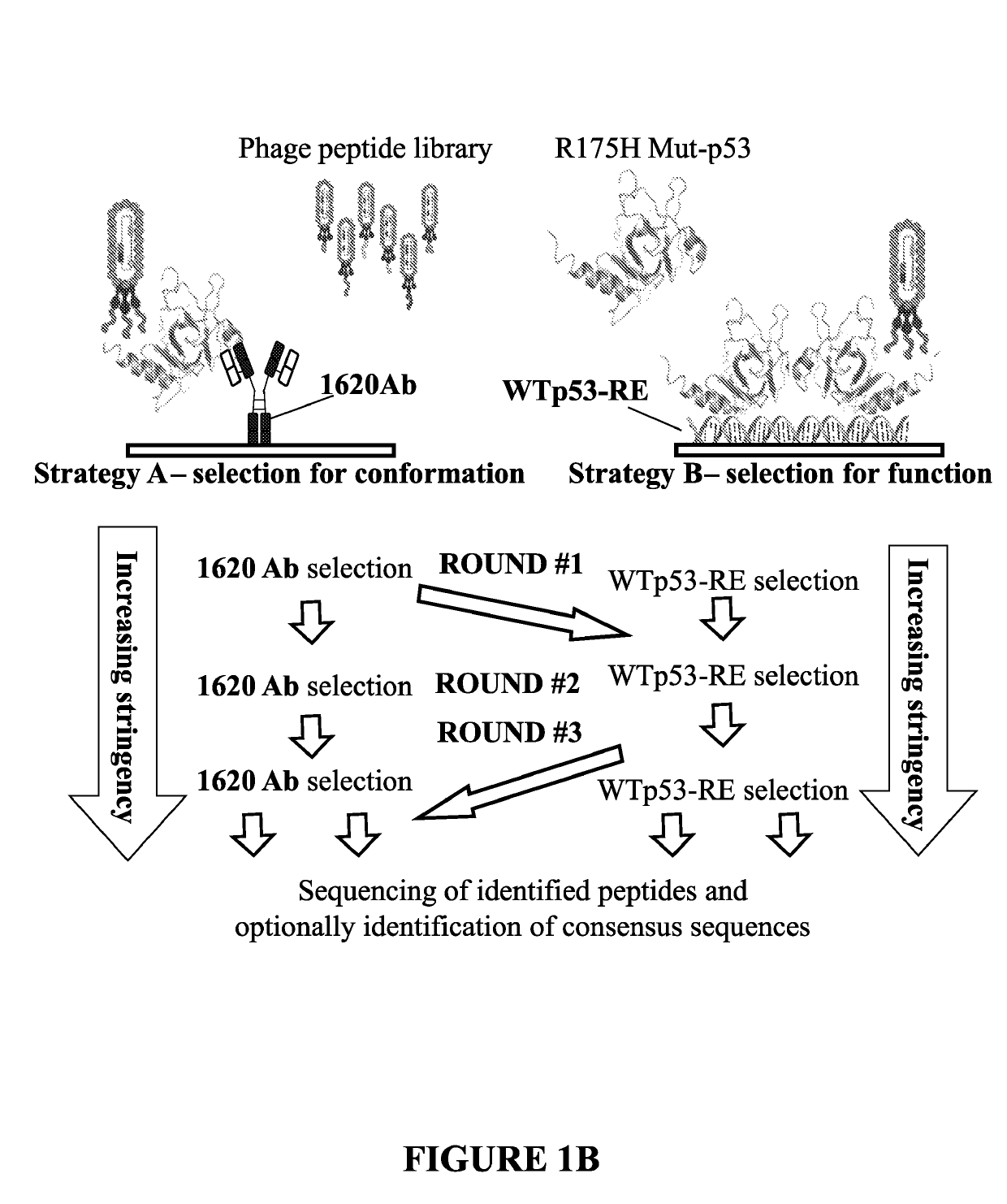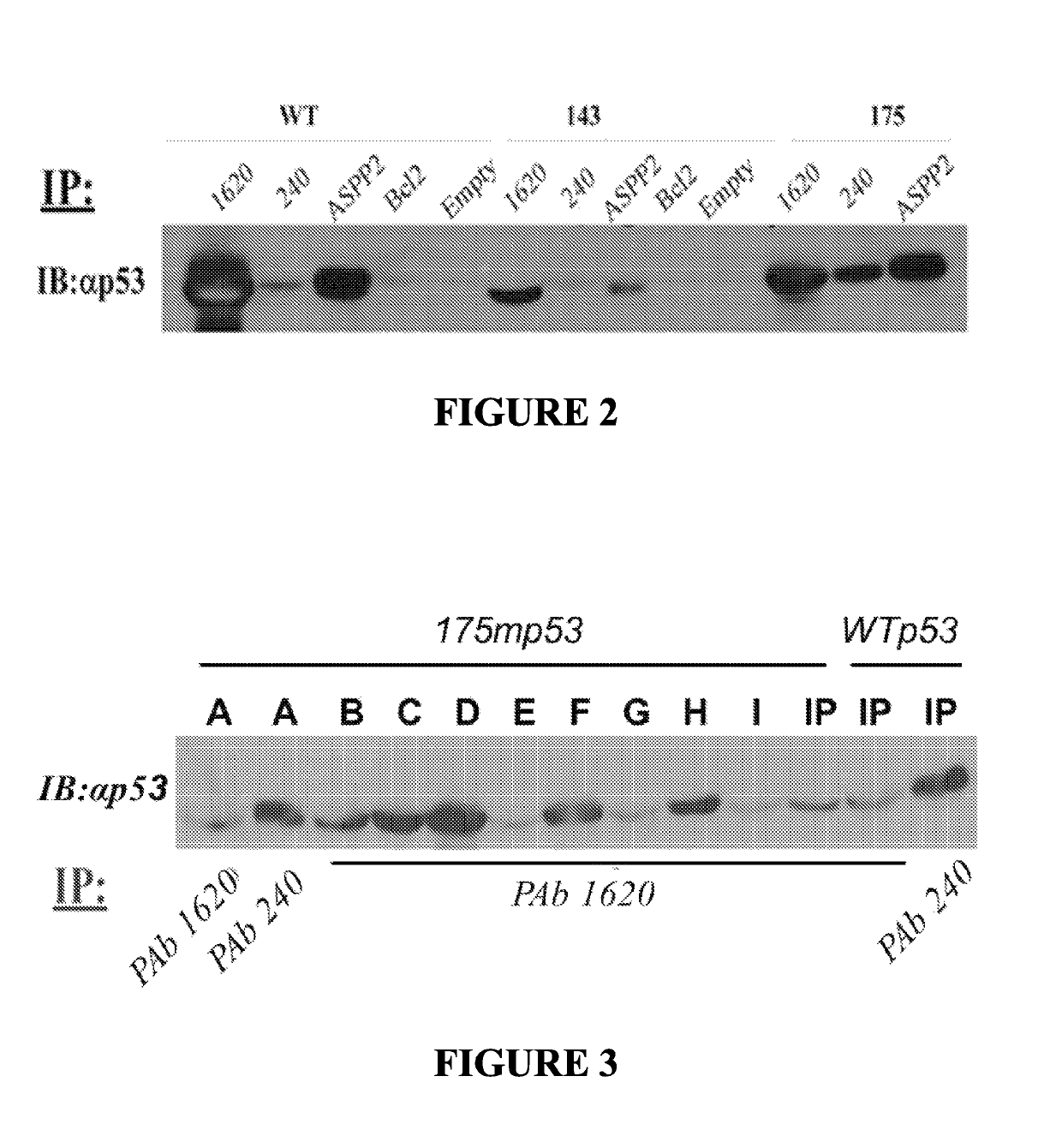Peptides capable of reactivating p53 mutants
- Summary
- Abstract
- Description
- Claims
- Application Information
AI Technical Summary
Benefits of technology
Problems solved by technology
Method used
Image
Examples
example 1
on of Experimental Conditions
Choosing a p53 Protein Source
[0222]When choosing the protein source for phage display selection, several considerations are taken into account; the use of purified proteins is recommended since interaction of phage clones with different proteins in solution can give rise to nonspecific false positive peptides. The human full length p53 protein purified from SF9 cells (see above), was used in the following experiments (Accession No. CG3336). Therefore, an expression system of p53 in SF9 insect cell line infected by baculovirus (as detailed above) was used. A major advantage of p53 expressed in this system is that it already contains post translational modifications.
Conformation of Baculovirus-Expressed WT p53 and Mut-p53 Proteins
[0223]Initial experiments with the Baculo-p53 were made by using the nuclear extracts lysates of Sf9 cells expressing either WT p53, a hot spot full length mutant p53 (R175H), or temperature sensitive (ts) mutant p53 (V143A). SF9 ...
example 2
creening of Phage Display Library and Selecting for Mut-p53 Reactivating Peptides
[0225]A phage display screen, using the R175H p53 protein, a single phd-12 phage library (NEB, Cat. No. E8110S) and selection with PAb1620 antibody was initially performed. 200 ng of R175H p53 were reacted with 1011 phage for 1 hour to allow binding of presented peptides of the phage to the Mut-p53 (R175H). Next, beads cross linked to PAb1620 were added for an additional 1 hour to immunoprecipitate the entire complex. This panning procedure was repeated for three rounds, increasing the stringency of the selection after each round by reducing the amount of incubated Mut-p53: 1st round 200 ng, 2nd round 100 ng and 3rd round 50 ng. Phages were eluted using purified WT p53 DBD, at a concentration of 2 μg / ml (p53 DBD (residues 94-293) was sub-cloned into pET-27b (Novagen)). The plasmid was transformed into E. coli BL21 (DE3) strain. Protein production was conducted following a procedure described for the mou...
example 3
r Screening, and Identifying Mut-p53 Reactivating Peptides
[0229]In order to screen, identify and isolate specific p53 reactivating peptides, a method which uses a combination of different and complementary selection strategies was devised and performed.
[0230]In this example, three selection strategies were combined. The first selection strategy relies on the reactivity with PAb1620, as described above. The second selection strategy is based on the binding of WT p53 to its consensus DNA sequence motif: p53 responsive element (p53-RE). The binding of p53 to its consensus DNA in-vitro has been extensively demonstrated [Joerger, A. C., M. D. Allen, and A. R. Fersht, Crystal structure of a superstable mutant of human p53 core domain. Insights into the mechanism of rescuing oncogenic mutations. J Biol Chem, 2004. 279(2): p. 1291-6). Accordingly, two complementary oligonucleotides were designed to produce dsDNA (after annealing). These oligonucleotides contain two tandem copies of a p53-RE...
PUM
| Property | Measurement | Unit |
|---|---|---|
| Length | aaaaa | aaaaa |
| Acidity | aaaaa | aaaaa |
| Conformation | aaaaa | aaaaa |
Abstract
Description
Claims
Application Information
 Login to View More
Login to View More - R&D
- Intellectual Property
- Life Sciences
- Materials
- Tech Scout
- Unparalleled Data Quality
- Higher Quality Content
- 60% Fewer Hallucinations
Browse by: Latest US Patents, China's latest patents, Technical Efficacy Thesaurus, Application Domain, Technology Topic, Popular Technical Reports.
© 2025 PatSnap. All rights reserved.Legal|Privacy policy|Modern Slavery Act Transparency Statement|Sitemap|About US| Contact US: help@patsnap.com



